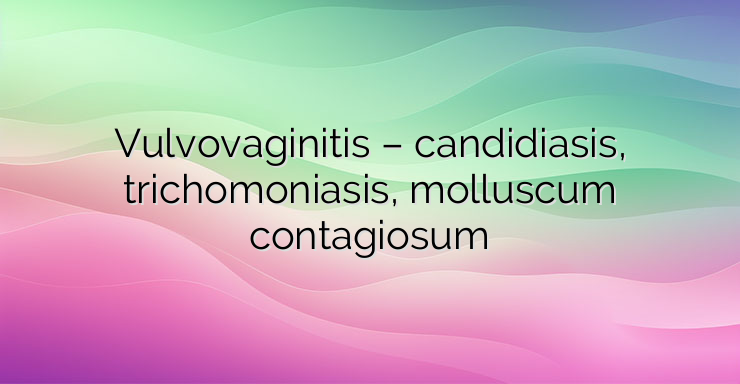4. Candidomycotic vulvovaginitis Candidomycotic infection and bacterial vaginosis are the two most common diseases of the vulva. This is probably due to the widespread use of antibiotics, hormonal contraceptives and corticosteroids. (First part of the material) The causative agent of candidiasis is a yeast-like fungus of the genus Candida. In nature, it is found on the surface of sugar-rich fruits and vegetables. From the external environment, the fungus enters the oral cavity and colon of a person, where it exists as a saprophyte. Fungi enter the vagina in two ways – autogenous and exogenous. In the first case, the causative agent falls in proximity from the anus, and in the second case – from an infected sexual partner. Fungi in the vagina do not always lead to infection. The causative agent can be eliminated by the defense mechanisms and no disease occurs. However, certain conditions potentiate its increased reproduction – high glycogen content of the vagina during pregnancy and diabetes, reduced general tissue and local immunity in AIDS patients, immunodeficiency diseases. Candida vulvovaginitis has two forms – acute and chronic. In the acute form, the causative agent parasitizes on the surface of the vaginal epithelial cells. The metabolic products of its exchange cause inflammation affecting, in addition to the vagina, also the vulva and the perineum. The main complaints of the patients are severe genital itching, pain and burning when urine falls on the inflamed vulva, increased vaginal discharge with a sour smell. The vaginal walls are red with whitish patches on them. In the chronic form, complaints are of increased genital fluorine and itching that appears from time to time. They are aggravated premenstrually or after sexual contact. The diagnosis of the disease is made after microscopy of a preparation of vaginal contents. Sometimes it is necessary to culturally establish the causative agent by culture on special media for the fungus. Treatment is carried out with antimycotic preparations. Simultaneous treatment of the sexual partner is carried out when a sexually transmitted infection, the cause of vulvovaginitis, is proven. 5. Trichomoniasis Trichomoniasis is a sexually transmitted disease caused by the intracellular parasite Trichomonas vaginalis. In women, trichomoniasis increases the risk of pelvic inflammatory disease, infertility and birth complications. Trichomonas vaginalis has 4 freely moving flagella, to which it owes its great motor activity. It uses the glycogen from the epithelial cells of the vagina as a nutrient medium. From the metabolism of the causative agent, toxic products are released, causing inflammation – diffuse or local. It lives, apart from the vagina, also in the urethra and Bartholin’s glands. Trichomonas vaginalis is less likely to cause infection in men. The reason is probably in the strong flushing stream of urine during micturition. In women, symptoms range from asymptomatic carriage to acute and chronic infection. In acute infection, the patient complains of:profuse watery genital discharge with unpleasant odor, itching, urinary disturbances and discomfort low down in the pelvis. The vaginal contents are yellow-green in color and contain numerous small air bubbles. In case of chronic infection, the complaints are less pronounced. The diagnosis is made by microscopy of vaginal contents – motile trichomonas are detected on the preparation, or by colposcopy. The treatment is medicinal and necessarily involves both partners. NEWS_MORE_BOX 6. Molluscum contagiosum Molluscum contagiosum is a sexually transmitted viral disease affecting squamous epithelial cells. It is common in young people, as well as in AIDS patients. It is clinically manifested by a characteristic rash affecting the area around the genitals, perineum or lower abdomen. The lesions are flesh-colored or pink, sometimes shiny, and have an indentation in the center. They may be accompanied by itching and bleeding. Treatment is imperative if complaints persist. In healthy people, the disease tends to be self-limiting and self-healing.


Leave a Reply